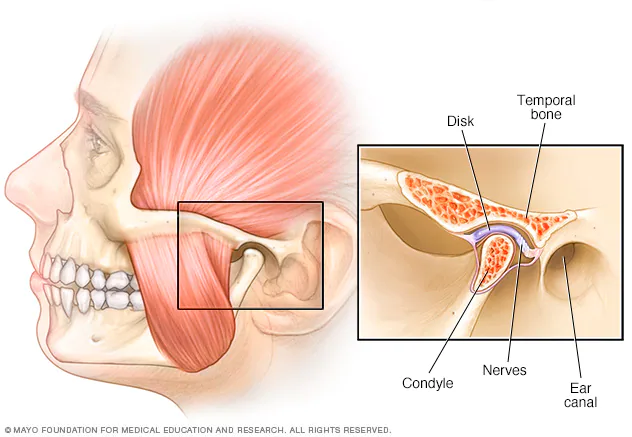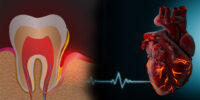Understanding TMJ Disorders: Symptoms, Causes, and Treatment Options

What is TMJ Disorder?
TMJ Disorder, or Temporomandibular Joint Disorder, refers to a condition where the joint that connects the jawbone to the skull becomes damaged or inflamed. This can cause a variety of uncomfortable symptoms that affect the jaw, head, and neck. Common symptoms include jaw tenderness, headaches, earaches and facial pain.
Anatomy of the Temporomandibular Joint
The TMJ is a complex joint that consists of several components, including the jawbone, the temporal bone, and a disc that cushions the joint. It is surrounded by muscles and ligaments that help it to function properly.
Causes of TMJ Disorders
There are several factors that can contribute to the development of TMJ Disorders, including physical injuries, arthritis, teeth grinding, and stress. In some cases, there may be multiple contributing factors.
Symptoms of TMJ Disorders
TMJ Disorders can cause a variety of symptoms that can be uncomfortable and disruptive to your daily life. Here are some of the most common symptoms:
Pain or tenderness in the jaw
One of the most noticeable symptoms of TMJ Disorders is pain or tenderness in the jaw. This pain may be constant or intermittent and may feel like a dull ache or sharp pain. It may be felt in one or both sides of the jaw and can sometimes radiate to other areas of the face, neck, or head.
Clicking or popping sounds when opening and closing the mouth
Another common symptom of TMJ Disorders is clicking, popping, or grinding sounds when you open and close your mouth. This may be due to the disc that cushions the joint slipping out of place or the bones of the joint rubbing against each other.
Difficulty opening the mouth wide
Some people with TMJ Disorders may have difficulty opening their mouth wide or may feel like their jaw is locked in place. This can make it difficult to eat, speak, or perform other daily activities.
Headaches or ear pain
TMJ Disorders can cause headaches, especially in the temples or behind the eyes. They can also cause ear pain or a feeling of fullness in the ears. This is because the TMJ is located close to the ears, and problems with the joint can affect the nerves in that area.
Facial swelling
In some cases, TMJ Disorders can cause facial swelling, particularly on the side of the face where the affected joint is located.
Diagnosis of TMJ Disorders
If you are experiencing any of below listed symptoms of TMJ Disorder, it’s important to seek for a professional help and evaluation. Here is a detailed explanation of the process of diagnosing TMJ Disorders:
- Medical history: Your healthcare professional will start by asking about your medical history, including any previous injuries or medical conditions that may be contributing to your symptoms.
- Physical exam: Your healthcare professional will perform a physical exam of your jaw, face, and neck to assess the range of motion of your jaw and check for tenderness or swelling. They may also listen for clicking or popping sounds when you open and close your mouth.
- Imaging tests: In some cases, your healthcare professional may order imaging tests to get a better look at the TMJ and surrounding structures. This may include X-rays, CT scans, or an MRI.
- Bite analysis: Your healthcare professional may also perform a bite analysis to check how your teeth fit together when you bite down. This can help determine if your symptoms are related to dental problems or jaw alignment issues.
- Referral to a specialist: In some cases, your healthcare professional may refer you to a specialist, such as an oral surgeon or a dentist who specializes in TMJ Disorders, for further evaluation and treatment.
Diagnosis of TMJ Disorders can be complicated and may require multiple evaluations and tests. Treatment options will depend on the underlying cause of your symptoms, so an accurate diagnosis is essential for effective treatment. If you are experiencing symptoms of TMJ Disorder, don’t hesitate to seek help from a healthcare professional.
Treatment Options for TMJ Disorders
There are several different treatment options for TMJ Disorders, depending on the severity of your symptoms and the underlying cause. Some common options include:
- Self-care techniques, such as jaw exercises and heat/cold therapy
- Medications, such as pain relievers or muscle relaxants
- Dental treatments, such as bite splints or dental crowns
- Surgery (in rare cases)
Here is the process and options of treatment for TMJ Disorders:
- Conservative treatments: In many cases, TMJ Disorders can be treated with conservative measures, such as over-the-counter pain relievers, ice or heat therapy, and exercises to improve jaw function. Your healthcare professional may also recommend relaxation techniques or stress management strategies to help reduce tension in the jaw muscles.
- Dental treatments: If your symptoms are related to dental problems, such as a misaligned bite or teeth grinding, your healthcare professional may recommend dental treatments such as orthodontics or a mouthguard to help improve your bite and reduce stress on the TMJ.
- Medications: In some cases, your healthcare professional may recommend medications to help relieve pain and inflammation associated with TMJ Disorders. These may include nonsteroidal anti-inflammatory drugs (NSAIDs), muscle relaxants, or tricyclic antidepressants.
- Injections: In more severe cases, your healthcare professional may recommend injections of corticosteroids or Botox to help relieve pain and reduce inflammation in the TMJ.
- Surgery: In rare cases, surgery may be necessary to treat TMJ Disorders. This may include procedures to repair or replace the joint or to realign the jaw.
It’s recommended to work with a healthcare professional to determine the most appropriate treatment plan for your specific situation. Treatment options may be tailored to your individual needs and may involve a combination of conservative measures and more aggressive treatments.
Prevention of TMJ Disorders
While not all cases of TMJ Disorder can be prevented, there are some steps you can take to reduce your risk, such as:
- Reducing stress through relaxation techniques like meditation or yoga
- Maintaining good dental hygiene
- Avoiding habits like chewing gum or biting your nails that can strain your jaw muscles
Conclusion
TMJ Disorders can be uncomfortable and disruptive, but there are effective treatment options available. If you are experiencing symptoms, don’t hesitate to seek help from a healthcare professional. With the right care, you can alleviate your symptoms and improve your quality of life.








